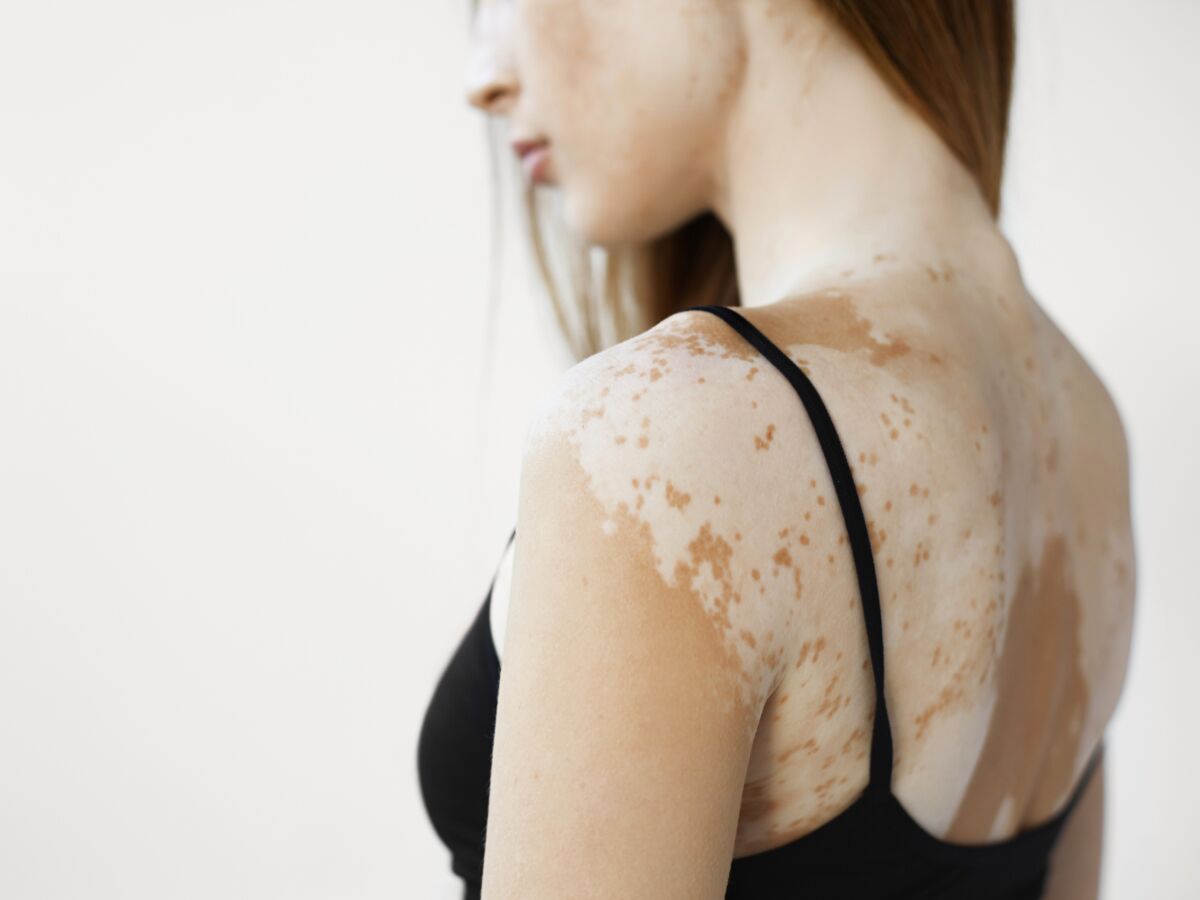Vitiligo is a benign autoimmune skin disease linked to dysfunction of the immune system. It causes the appearance of white spots, due to the disappearance of melanocytes, the cells of the epidermis producing melanin, the main pigment of the skin. 0.5 to 1% of the world population would be affected, according to Inserm. If the cause of this disease is largely genetic, certain risk factors could be environmental such as stress, or exposure to mites.
This is what a group of researchers from the Mediterranean Center for Molecular Medicine in Nice studied through two studies focusing on the impact of mites on the development of vitiligo and alternatives to protect fragile skin from these arachnids. In the main study, they analyzed epidermis samples taken from vitiligo patients and healthy volunteers, which they then exposed to mites. Then in a second step, they tested a way to protect the epidermis using a cream based on ceramides, natural lipids present in the skin supposed to protect it from external aggressions.
Vitiligo: mites produce proteins that degrade skin cell adhesion
“These microscopic organisms can trigger allergiesand this led us to suspect that they might have a link to the immune system abnormalities seen in vitiligo,” explains Méri Tulic, one of the researchers in the study, in a press release. She also details the phenomenon which would explain the role of mites in the development of vitiligo: “They produce a large number of proteasesproteins which degrade others, but the detachment of melanocytes from the skin of patients involves the destruction of E-cadherins, proteins which allow cells to adhere to each other”.
At the end of the study, contact between the skin and mites caused the secretion of inflammatory molecules and an increase in the concentration of proteases, in proportion to the intensity of the exposure. “Molecular analyzes confirmed that a mite protease called Der p1 destroys E-cadherin in the epidermis and causes melanocytes to detach”, concludes the researcher.
But the authors of this work believe that some people are more at risk than others. Because, “if this phenomenon was observed in all samples, it was approximately one hundred times more important in those from patients with vitiligothere would therefore be an increased susceptibility of certain skin to mites, with more fragile cell junctions in the epidermis and a more reactive immune system. “, specifies Méri Tulic.
Treatment options to reduce the impact of mites on skin at risk of vitiligo
Concerning the ceramide-based cream applied to skin samples after prolonged contact with mites, it made it possible, according to the scientists, to significantly reduce their harmful effects on the epidermis, with a reduction in inflammation and loss of melanocytes. This treatment could therefore be used by patients with vitiligo to limit the progression of the disease or avoid relapses after a repigmentation treatment of the lesions.
According to the scientists, these results show how a environmental trigger may contribute to the onset and worsening of vitiligo. “It remains to be seen whether the patients allergic to dust mites could constitute a subgroup of people particularly vulnerable to vitiligo, more at risk of developing this disease and in a more severe form” opens Méri Tulic on the continuation of the research. Indeed, this link between exposure to dust mites and the appearance of vitiligo must still be tested in controlled clinical trials.
Sources
Read also :
⋙ Vitiligo: what treatments are available?
⋙ Eczema, psoriasis, vitiligo: advice from the dermatologist to better cope with your skin disease
⋙ How can I limit allergens and dust mites in my home?
